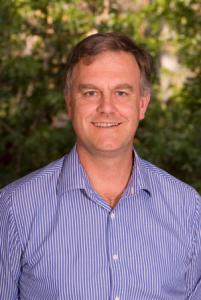 Research on organic semiconductor technologies has seen School of Chemistry & Molecular Biosciences ARC Laureate Fellow, Professor Paul Burn, be awarded two prestigious ARC Discovery Projects grants valued at more than $1.3 million to commence in 2017.
Research on organic semiconductor technologies has seen School of Chemistry & Molecular Biosciences ARC Laureate Fellow, Professor Paul Burn, be awarded two prestigious ARC Discovery Projects grants valued at more than $1.3 million to commence in 2017.
Professor Burn is Head and Director of UQ’s Centre for Organic Photonics & Electronics (COPE) and his work is shaping global efforts in organic semiconductor technologies.
“One project is in collaboration with Professor Chihaya Adachi of Kyushu University and is on the development of a new class of light-emitting material that can be used in organic light-emitting diodes (LEDs), which are a low embedded energy, ultrathin efficient emissive technology,” Professor Burn said.
“By creating innovative semiconductor materials and diode architectures the team aims to deliver transformative OLEDs that can be used in displays and lighting.”
Professor Burn said ultrathin, inexpensive, flexible, displays and lighting would change the way people lived.
“The efficiency improvements made possible by OLED technology can reduce electricity consumption, carbon dioxide emissions, and the cost of living,” he said.
“Being able to collaborate with a world leader in the field, Professor Adachi, will enable more rapid progress and world class outputs.”
The second project draws together UQ colleagues Professor Ian Gentle and Dr Paul Shaw, and Dr Nick Fitzgerald of the Australian Government’s Defence Science and Technology Group (DSTG) and Associate Professor Justin Hodgkiss at the Victoria University of Wellington (NZ) into a powerful team to tackle the detection of chemical warfare agents.
The multidisciplinary project aims to create luminescent plastic optoelectronic materials that can detect airborne chemical warfare agents, and in particular nerve agents.
Such agents are often odourless and invisible at lethal concentrations and therefore advanced technology solutions are required to detect and identify them prior to exposure.
“The development of materials, analytical methods, and sensing protocols for the rapid and selective detection of chemical warfare threats such as nerve agent vapours is of strong interest to security agencies in Australia and worldwide as they seek to protect our military and give our communities peace of mind,” Professor Burn said.
“The combination of chemistry, photophysics and materials science gives the program the best chance of success.”
Professor Burn said he was “delighted that the DSTG are program partners as it will enable the project to be grounded, with the end user in mind”.
Read the UQ News release on the latest ARC grants round.
The total indicative funding awarded to UQ over the five Australian Research Council schemes is $37,114,180 – 87 grants altogether.



